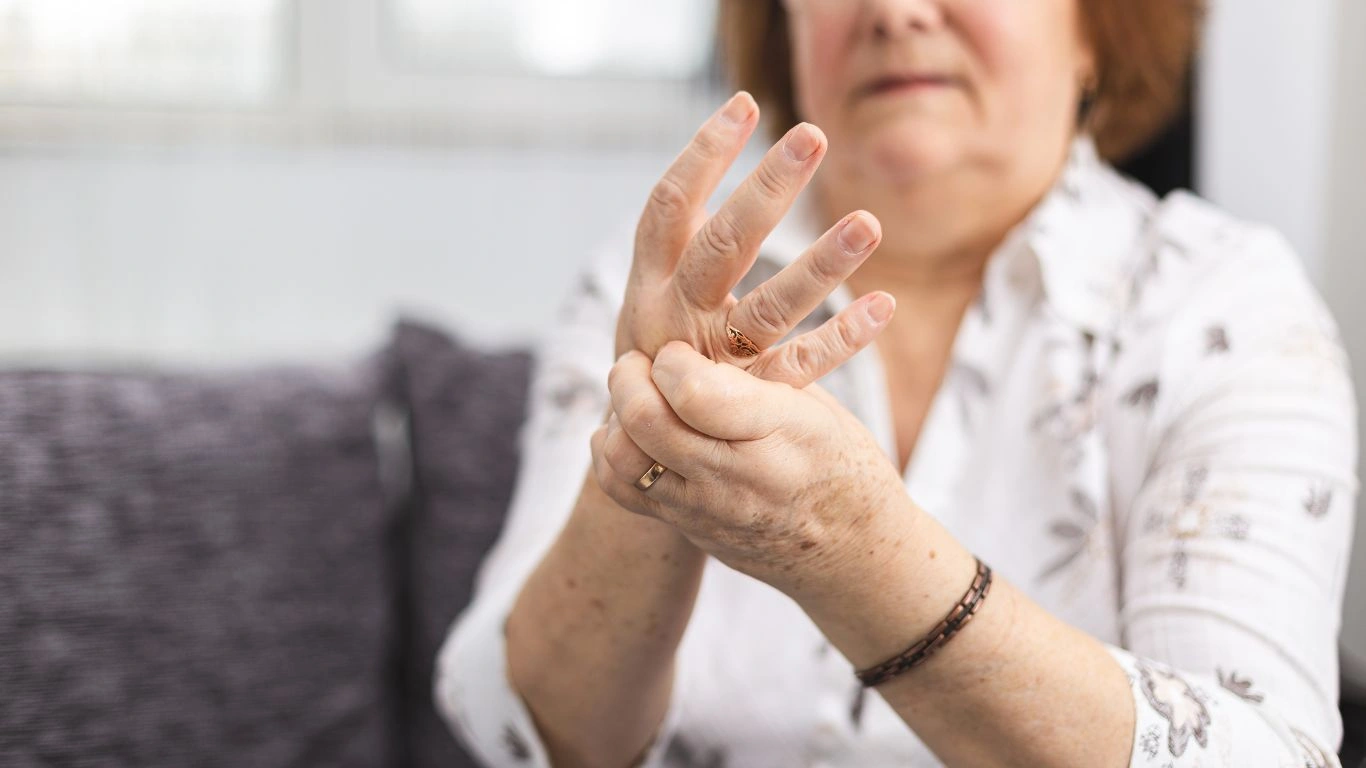How the RA and Sugar Connection Could Be Worsening Your Symptoms
If there’s one question I hear over and over from my patients, it’s this: “Is there a connection between my rheumatoid arthritis and sugar?” And let me tell you, after years working as a rheumatology nurse practitioner, diving into research, and listening closely to patients’ lived experiences, the answer is far from simple — but it’s definitely worth talking about. The RA and sugar connection isn’t just some wellness trend or social media myth. It’s real, and it’s something I’ve seen impact symptom flares, inflammation levels, and even emotional well-being. So let’s break it down, real talk style.
How Sugar May Be Stirring the Pot in RA

Inflammation: Sugar’s Favorite Playground
Let’s start with the basics. RA is an autoimmune condition, right? That means your body’s immune system is mistakenly attacking your joints, causing swelling, pain, and long-term joint damage if not managed properly. Now toss sugar into that equation. Sugar — especially the refined, processed kind — has been shown to trigger pro-inflammatory cytokines. These little troublemakers can worsen the inflammatory environment in the body, which is exactly what we’re trying to minimize in RA management.
Personally, I’ve had patients who noticed that after a weekend of indulgent treats — cookies, cakes, maybe a soda or two — their joints felt stiffer, more swollen, and just plain angry. They’d say things like, “It’s like my body’s punishing me for enjoying dessert!” That’s not your imagination. It’s your immune system reacting to that sugar spike.
The Insulin Rollercoaster and Joint Chaos
Ever heard of a blood sugar crash? That yo-yo effect from a sugary meal can send your insulin on a wild ride. And guess what? Insulin resistance has been linked to higher levels of systemic inflammation. If you’re already dealing with RA, you don’t need anything adding fuel to the fire. Literally.
Here’s a quick breakdown of what can happen after high sugar intake:
- Blood sugar spikes rapidly
- Insulin rushes in to manage the sugar overload
- Body responds with increased inflammatory markers
- Immune response intensifies — and that means more joint discomfort
From a clinical perspective, I always remind patients that keeping blood sugar stable isn’t just about preventing diabetes — it’s about supporting overall inflammatory health, especially with autoimmune diseases like RA.
Cravings, Cortisol, and Chronic Pain: The Vicious Cycle

Sugar as a Comfort — and a Complication
Here’s something I know we don’t talk about enough: the emotional side of RA. Living with chronic pain is exhausting. It’s easy to reach for sugary snacks when you’re feeling down, depleted, or just plain over it. And honestly, who can blame you? Sugar gives you that quick serotonin boost. But unfortunately, it’s a trap. That temporary feel-good moment is often followed by more inflammation, more fatigue, and more pain.
When cortisol (our stress hormone) spikes — something that happens frequently in chronic illness — it can actually drive sugar cravings. So you’re caught in this loop:
- Chronic pain → stress
- Stress → cortisol release
- Cortisol → sugar cravings
- Sugar → inflammation
- Inflammation → more pain
That cycle is hard to break. But understanding it is the first step toward changing the pattern. I’ve walked this journey with many patients, helping them identify not just what they eat, but why they reach for certain foods. When we connect those dots, we can make more mindful choices — ones that actually support healing rather than sabotage it.
What the Research Is Telling Us About RA and Sugar

Study After Study, the Connection Adds Up
While more research is always welcome (and needed!), current studies are already painting a compelling picture. A 2017 study in the American Journal of Clinical Nutrition found that women who consumed high levels of sugary soda had a higher risk of developing RA. Another study published in Rheumatology International reported that diets rich in added sugars were associated with higher RA disease activity.
It’s not just theory — it’s backed by growing clinical evidence. And while not everyone reacts to sugar the same way, if you have RA, it’s worth paying attention to how your body responds after sweet treats or carb-heavy meals. In practice, I’ve seen patients reduce their flares just by making small tweaks to sugar intake. It’s empowering to realize that food isn’t just fuel — it can be medicine too.
What About Natural Sugars? Are They Off the Table Too?

Fruit Isn’t the Enemy — Let’s Clear That Up
One of the first questions I get when we talk about cutting back on sugar is: “Do I need to stop eating fruit?” And I totally get the panic — because let’s be honest, giving up cupcakes is hard enough without saying goodbye to strawberries too.
But here’s the deal. Whole fruits — think berries, apples, oranges — contain natural sugars, yes, but they also bring along fiber, antioxidants, vitamins, and minerals. These nutrients actually help regulate how sugar is absorbed in the body. So unlike that glazed donut or cola, fruit doesn’t slam your system with a sugar bomb.
In fact, some fruits like blueberries and cherries have been linked to reduced inflammation. So no, you don’t have to ditch your morning banana or your favorite smoothie. Just aim to enjoy fruit in its whole form, not fruit juices or dried varieties loaded with added sugars.
What I Tell My Patients
When I’m sitting down with patients during a flare or while reviewing their lifestyle, I always stress: focus more on added sugars than naturally occurring ones. It’s not about perfection — it’s about awareness and balance. I’m a big fan of the 80/20 rule. Eat clean and anti-inflammatory 80% of the time, and leave room for the occasional treat without guilt. Mental health matters too, especially when managing something as relentless as RA.
Label Sleuthing: Sugar’s Many Aliases

The Sneaky Side of Processed Foods
Alright, time for a bit of real talk. Sugar hides in more places than you’d think — even in foods that don’t taste sweet at all. I’ve had patients who were eating what they thought were “healthy” options like granola bars, salad dressings, or yogurt, only to realize they were loaded with hidden sugars. One even found sugar in her favorite “heart-healthy” tomato sauce!
Here’s a quick list of sugar aliases you might spot on ingredient labels:
- High fructose corn syrup
- Cane juice or evaporated cane juice
- Maltodextrin
- Barley malt
- Agave nectar
- Dextrose, sucrose, glucose, fructose
If you’re scanning a label and one of these pops up in the first few ingredients, that’s a red flag. Even things like crackers or frozen meals can be sugar-packed in disguise. Don’t worry — you don’t have to memorize them all. Start slow. Pick one meal or snack a day and scan the label. Awareness builds from there.
Finding Your Personal Sugar Threshold

Everybody’s Different — So Is Every RA Journey
Here’s something I always remind my patients: there’s no one-size-fits-all formula with RA. Your body’s reaction to sugar might look different from someone else’s. Some folks can tolerate a small dessert here and there with zero repercussions. Others might feel achy and foggy the next day from just a bite of birthday cake.
That’s why I often recommend keeping a simple food and symptom journal for a couple of weeks. Nothing fancy — just jot down what you eat and how your joints feel later that day or the next. Patterns tend to show up pretty quickly. It’s honestly one of the most empowering tools in figuring out your own inflammatory triggers. Plus, it’s helpful data to bring into our appointments. It gives us a roadmap to work with.
From Experience: A Gentle Nudge, Not a Ban
I’ll be honest — I love dessert. I grew up baking with my grandma, and to this day, a warm chocolate chip cookie is still my comfort food. But I’ve learned to be intentional. I’ll enjoy one when I really want it, not out of habit or stress. And when I do, I’ll pair it with some protein or healthy fat to slow down the sugar absorption.
For my patients, I always say: this isn’t about deprivation. It’s about supporting your body so it supports you back. When your joints stop screaming every morning and your energy improves — that’s the kind of motivation that lasts. And that all starts with tuning in, noticing how sugar shows up in your life, and making choices that feel good in your body, not just in the moment.
Quick Tips to Start Cutting Back Without Misery
- Swap sweetened yogurt for plain Greek yogurt + berries
- Use cinnamon or vanilla to flavor oatmeal instead of brown sugar
- Stay hydrated — sometimes thirst disguises itself as sugar craving
- Meal prep anti-inflammatory snacks so you’re not tempted when you’re hungry
- Don’t buy it — if it’s not in your house, it’s easier to skip
How to Rebuild a Relationship with Food When You Have RA

Food Isn’t the Villain — It’s Part of the Healing Process
If you’ve made it this far, first of all — thank you for hanging in with me. I know this topic can feel a bit overwhelming. Cutting back on sugar when it’s been your go-to comfort or a lifelong habit isn’t easy. Trust me, I’ve been there too. But here’s the truth I always come back to with my patients: it’s not about restriction — it’s about restoration.
When you begin to choose foods that support your joints, your gut, and your energy levels, you start to experience something that medications alone can’t always give you — a sense of control. You begin to partner with your body instead of constantly feeling like it’s fighting you. And that’s incredibly empowering.
In my clinical practice, I’ve seen the biggest changes happen not when someone goes 100% sugar-free overnight (because let’s be real, that usually doesn’t stick), but when they make small, consistent changes. A little less sugar here, a bit more anti-inflammatory fat there, choosing a nourishing snack over a quick fix — those are the wins that add up over time.
Start Where You Are — Progress, Not Perfection
One of my favorite patient success stories involved a woman who was completely overwhelmed by all the nutrition advice online. She came to me frustrated, tired, and honestly a little skeptical. We started by just identifying her biggest sources of hidden sugar — flavored coffee creamers, packaged breads, and “healthy” granola bars. She swapped them out one at a time. And you know what? Within a month, her morning stiffness reduced dramatically, and she even noticed fewer afternoon crashes.
You don’t have to do it all at once. Just start. Small steps. One label. One choice. One meal.

Accountability Can Make All the Difference
One of the best things you can do when you’re making lifestyle shifts — especially with something as engrained as sugar habits — is to get support. That might look like a registered dietitian who understands autoimmune conditions. It might be a Facebook group for RA warriors sharing tips and recipes. Or maybe it’s just texting a friend when you’re tempted to dive into a bag of cookies after a rough flare day.
I’ve found that patients who surround themselves with even a little accountability are way more likely to stick with their goals — and actually enjoy the process. Plus, it helps to vent to someone who gets it.
My Go-To Resources for Learning More
When you’re ready to dive deeper into the science or find community-driven support, here are a few reputable places to start:
- Arthritis Foundation – great for up-to-date research and practical tips
- National Center for Complementary and Integrative Health (NCCIH) – covers nutrition and holistic approaches
- Academy of Nutrition and Dietetics – find a dietitian who understands inflammatory conditions
Remember, the internet is full of advice, but not all of it is evidence-based or applicable to you. Always look for information that comes from medical organizations or certified professionals. And when in doubt — talk to your rheumatology care team.
So… Is the RA and Sugar Connection Real?
Yes — And You Can Do Something About It
At the end of the day, the RA and sugar connection is more than just a theory — it’s a pattern that many of us in the medical community have seen play out over and over again. From the science to the stories, it’s clear that managing sugar intake can be a powerful part of managing rheumatoid arthritis. But remember, this isn’t about being perfect. It’s about listening to your body, learning what fuels it best, and treating yourself with compassion along the way.
If there’s one thing I’ve learned working closely with RA patients, it’s that small steps matter. And they build into real change. So whether you’re just becoming aware of how sugar affects your joints, or you’re already swapping out sweeteners and reading food labels like a pro — you’re on the right path. Keep going. And don’t hesitate to reach out for support along the way.
You’ve Got This, One Bite at a Time.
References
Disclaimer
This article is for informational purposes only and is not intended to replace professional medical advice, diagnosis, or treatment. Always consult with a qualified healthcare provider regarding any medical condition or dietary changes, especially when managing chronic illnesses like rheumatoid arthritis.

Tarra Nugroho is a dedicated Nurse Practitioner with a strong foundation in family and preventive care. She brings both compassion and clinical expertise to her practice, focusing on patient-centered care and health education. As a contributor to Healthusias.com, Tarra translates medical knowledge into clear, empowering articles on topics like women’s health, chronic disease management, and lifestyle medicine. Her mission is simple: help people feel seen, heard, and informed—both in the clinic and through the content she creates. When she’s not caring for patients, Tarra enjoys weekend hikes, plant-based cooking, and curling up with a good health podcast.






